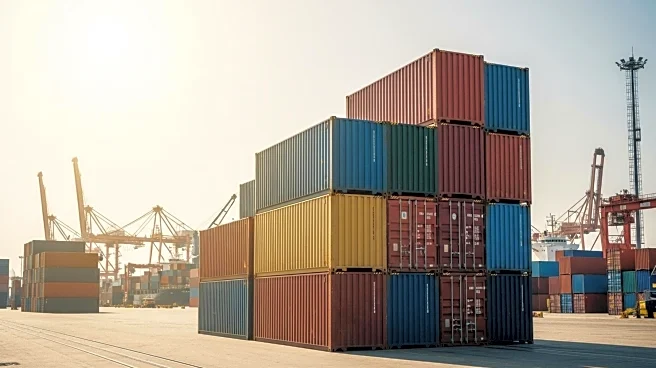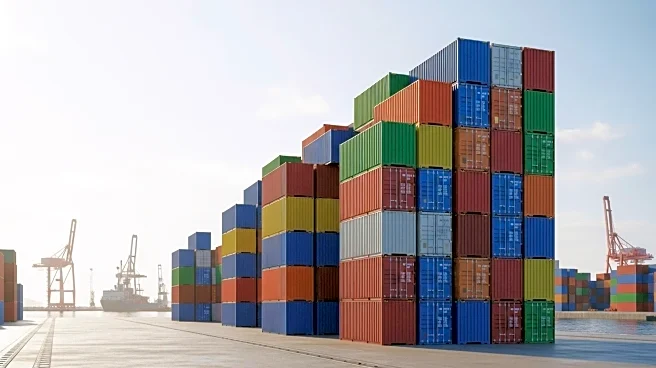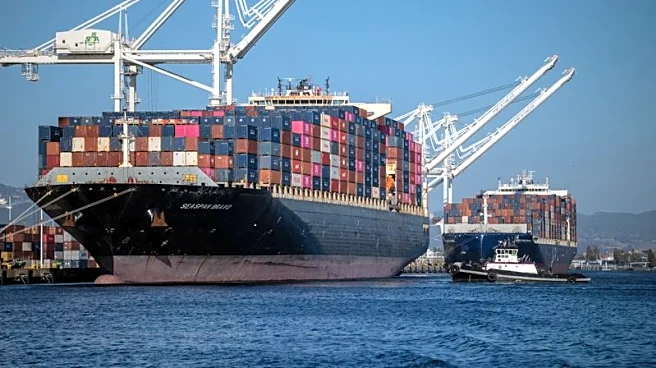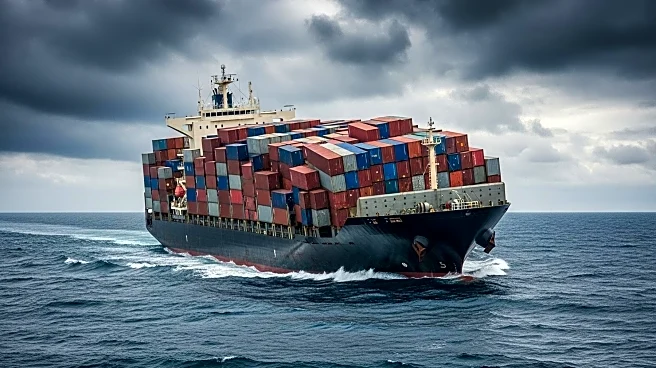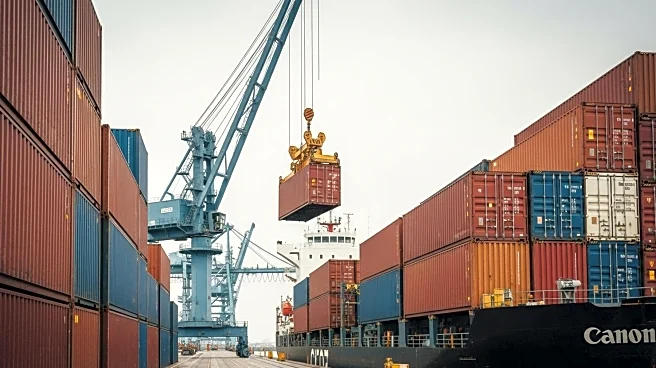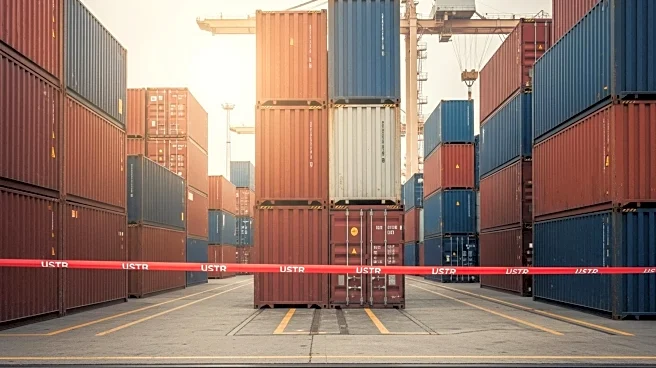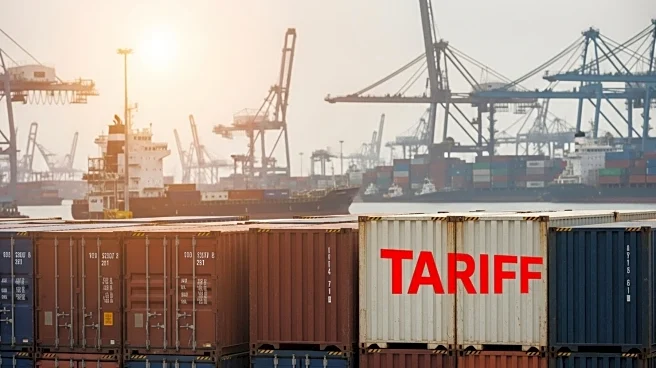What's Happening?
U.S. containerized imports fell by 8.4% in September compared to the previous year, largely due to trade tensions stemming from President Trump's tariff policies. Imports from China saw a significant drop of 22.9%, impacting various sectors including aluminum, footwear, and electric machinery. Despite the decline, U.S. seaports handled 2.31 million 20-foot-equivalent units (TEUs) of container cargo, marking the third highest September volume recorded. The National Retail Federation and Hackett Associates forecast a continued decrease in monthly import cargo volumes at major U.S. ports for the remainder of the year. Additional tariffs on upholstered furniture, kitchen cabinets, and bathroom vanities are set to be implemented next week, with further increases planned for January.
Why It's Important?
The ongoing volatility in U.S. tariff policy is creating significant economic uncertainty, affecting multinational shippers and businesses across various sectors. The decline in imports from China and other countries could lead to increased costs for U.S. consumers and businesses, potentially impacting economic growth. The tariffs are also influencing global trade dynamics, with countries in Southeast and South Asia increasing their market share as U.S. imports from traditional partners decline. This shift could have long-term implications for U.S. trade relationships and economic stability.
What's Next?
The scheduled tariff increase on Chinese imports, delayed by President Trump in August, is set for November 10 unless a deal is reached or further delays are announced. Businesses and policymakers will be closely monitoring the impact of these tariffs on trade volumes and economic indicators. The potential for further tariff adjustments or negotiations could influence market conditions and business strategies in the coming months.
Beyond the Headlines
The sensitivity of importers to tariff policies highlights the broader implications of trade tensions on global supply chains. As countries adjust their trade strategies, the U.S. may need to reconsider its approach to international trade to maintain competitiveness and economic stability.

